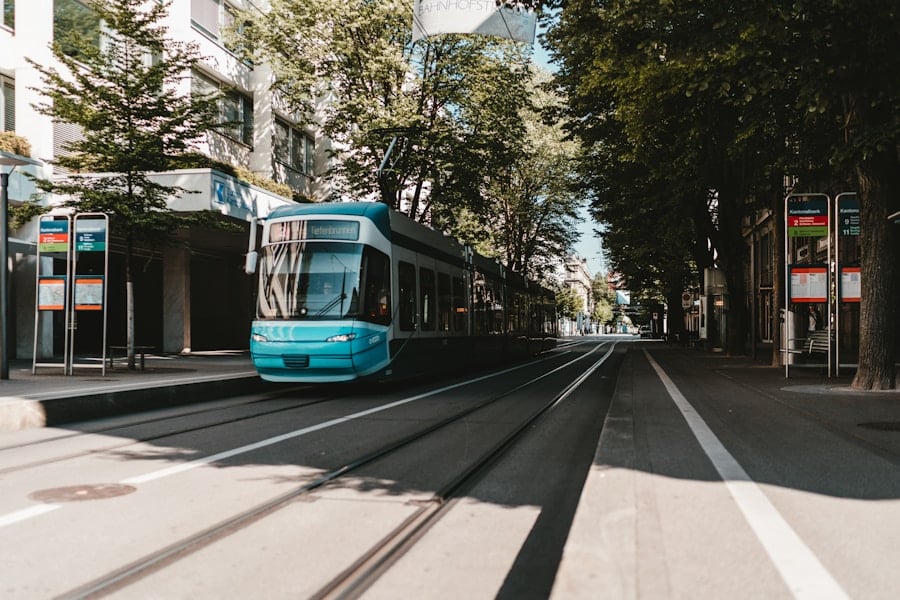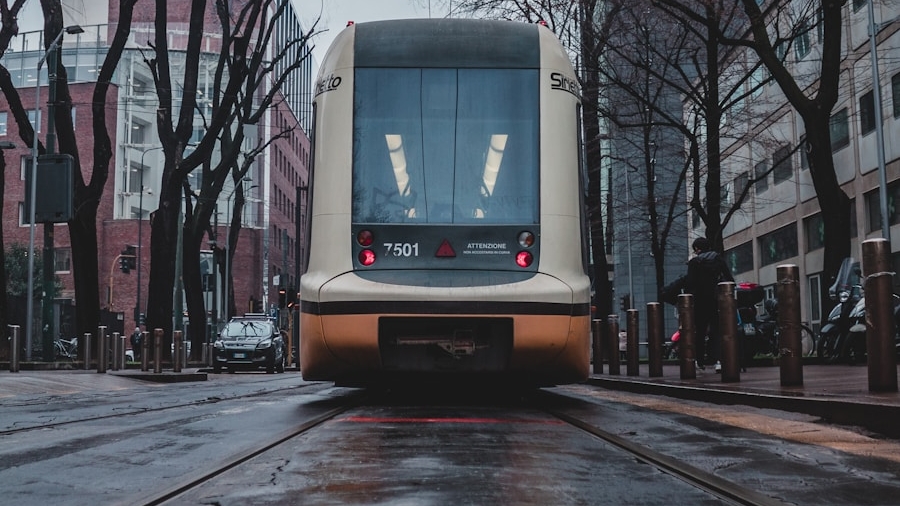The rapid urbanization of the 21st century has led to an unprecedented demand for efficient and sustainable urban mobility solutions. As cities expand and populations grow, the challenges associated with transportation become increasingly complex. Artificial Intelligence (AI) has emerged as a transformative force in addressing these challenges, offering innovative solutions that enhance the efficiency, safety, and sustainability of urban mobility systems.
By leveraging vast amounts of data and advanced algorithms, AI can optimize traffic flow, improve public transportation systems, and facilitate the integration of various modes of transport, ultimately contributing to more livable urban environments. AI’s role in sustainable urban mobility is multifaceted, encompassing everything from traffic management to the development of electric and autonomous vehicles. The integration of AI technologies into urban transportation systems not only addresses current inefficiencies but also paves the way for future innovations that can significantly reduce carbon footprints and enhance the quality of life in urban areas.
As cities grapple with issues such as congestion, pollution, and inadequate public transport, AI stands out as a key player in creating smarter, more sustainable urban mobility solutions.
Key Takeaways
- AI plays a crucial role in addressing the challenges of sustainable urban mobility by providing innovative solutions for traffic management and optimization.
- Current challenges in urban mobility, such as traffic congestion and inefficient public transportation, can be effectively addressed through the implementation of AI-driven solutions.
- AI has a significant impact on public transportation and ride-sharing services by improving efficiency, safety, and customer experience.
- The integration of AI-powered solutions in electric and autonomous vehicles is essential for enhancing their performance, safety, and sustainability.
- AI promotes active and sustainable modes of transportation by providing intelligent solutions for route planning, infrastructure development, and behavior analysis.
Current Challenges in Urban Mobility and the Role of AI
Urban mobility faces a myriad of challenges that hinder the efficiency and sustainability of transportation systems. Traffic congestion is one of the most pressing issues, leading to increased travel times, higher fuel consumption, and elevated emissions. According to a report by INRIX, traffic congestion costs U.S.
drivers over $87 billion annually in lost productivity and wasted fuel. Additionally, public transportation systems often struggle with reliability and coverage, leaving many residents dependent on personal vehicles, which exacerbates congestion and pollution. AI plays a crucial role in addressing these challenges by providing data-driven insights that can inform decision-making and optimize transportation systems.
For instance, AI algorithms can analyze real-time traffic data to predict congestion patterns and suggest alternative routes for drivers. This not only alleviates traffic jams but also reduces emissions by minimizing idling time. Furthermore, AI can enhance public transportation by predicting demand patterns, allowing transit agencies to adjust schedules and routes dynamically.
By harnessing the power of AI, cities can create more efficient transportation networks that meet the needs of their residents while promoting sustainability.
AI-Driven Solutions for Traffic Management and Optimization

One of the most significant applications of AI in urban mobility is traffic management and optimization. Traditional traffic management systems often rely on fixed signals and manual monitoring, which can lead to inefficiencies and delays. In contrast, AI-driven solutions utilize real-time data from various sources, including sensors, cameras, and GPS devices, to optimize traffic flow dynamically.
For example, adaptive traffic signal control systems use AI algorithms to adjust signal timings based on current traffic conditions, reducing wait times at intersections and improving overall traffic flow. Moreover, AI can facilitate the development of smart city initiatives that integrate various transportation modes into a cohesive system. By analyzing data from public transport systems, ride-sharing services, and personal vehicles, AI can provide insights into how different modes interact and influence one another.
This holistic approach enables city planners to design infrastructure that supports seamless transitions between modes of transport, ultimately enhancing mobility for all users. For instance, cities like Barcelona have implemented AI-driven traffic management systems that have successfully reduced congestion by up to 20%, showcasing the potential of these technologies in creating more efficient urban environments.
The Impact of AI on Public Transportation and Ride-Sharing Services
Public transportation systems are critical components of urban mobility, yet they often face challenges related to efficiency, accessibility, and user satisfaction. AI has the potential to revolutionize public transport by improving service reliability and enhancing the overall user experience. For example, predictive analytics powered by AI can forecast passenger demand based on historical data and real-time factors such as weather conditions or local events.
This allows transit agencies to allocate resources more effectively, ensuring that buses and trains are available when and where they are needed most. In addition to enhancing traditional public transport systems, AI has also transformed ride-sharing services. Companies like Uber and Lyft utilize sophisticated algorithms to match riders with drivers efficiently while optimizing routes to minimize wait times and reduce congestion.
Furthermore, AI can facilitate the integration of ride-sharing with public transport options, creating a more comprehensive mobility ecosystem that encourages users to choose sustainable modes of transport over personal vehicles.
AI-Powered Solutions for Electric and Autonomous Vehicles
The rise of electric vehicles (EVs) and autonomous vehicles (AVs) represents a significant shift in urban mobility paradigms. AI plays a pivotal role in both sectors by enhancing vehicle performance, safety, and user experience. In the case of EVs, AI algorithms can optimize battery management systems to extend range and improve charging efficiency.
For instance, Tesla’s AI-driven software continuously learns from driving patterns to optimize energy consumption, allowing drivers to maximize their vehicle’s range. Autonomous vehicles rely heavily on AI technologies for navigation, obstacle detection, and decision-making processes. Advanced machine learning algorithms enable AVs to interpret data from sensors such as LiDAR, cameras, and radar to understand their surroundings accurately.
Companies like Waymo have made significant strides in developing fully autonomous vehicles that can navigate complex urban environments safely. The integration of AVs into urban mobility systems has the potential to reduce traffic accidents significantly while also decreasing congestion by optimizing driving patterns.
The Role of AI in Promoting Active and Sustainable Modes of Transportation

Optimizing Infrastructure for Active Transportation
By analyzing data on pedestrian and cyclist behavior, cities can identify areas where infrastructure improvements are needed to encourage these sustainable modes of transport. For example, AI-driven applications can provide real-time information on bike-sharing availability or suggest safe routes for cyclists based on traffic conditions.
Smart Infrastructure for Active Transportation
Moreover, AI can facilitate the development of smart infrastructure that supports active transportation. Intelligent traffic signals can prioritize pedestrians and cyclists at intersections, while smart streetlights equipped with sensors can adjust their brightness based on pedestrian activity levels. These innovations not only enhance safety but also create a more inviting environment for active transportation users.
Real-World Success Stories
Cities like Amsterdam have successfully integrated such technologies into their urban planning strategies, resulting in increased cycling rates and improved public health outcomes.
Ethical and Privacy Considerations in AI-Enabled Urban Mobility Solutions
While the potential benefits of AI in urban mobility are substantial, they also raise important ethical and privacy considerations that must be addressed. The collection and analysis of vast amounts of data from various sources pose significant privacy risks for individuals. For instance, real-time tracking of users’ movements through mobile applications or connected vehicles can lead to concerns about surveillance and data misuse.
It is essential for cities and companies implementing AI-driven solutions to establish robust data governance frameworks that prioritize user privacy while still enabling effective service delivery. Additionally, ethical considerations surrounding algorithmic bias must be taken into account when deploying AI technologies in urban mobility contexts.
For example, if ride-sharing services primarily serve affluent neighborhoods while neglecting underserved communities, this could exacerbate social inequities in access to transportation options. To mitigate these risks, stakeholders must engage in transparent practices that involve diverse perspectives in the design and implementation of AI solutions.
The Future Outlook for AI in Enhancing Sustainable Urban Mobility Solutions
Looking ahead, the future of AI in sustainable urban mobility solutions appears promising as technology continues to evolve rapidly. The integration of AI with emerging technologies such as 5G connectivity will enable even more sophisticated applications that enhance real-time communication between vehicles, infrastructure, and users. This interconnectedness will facilitate the development of smart cities where transportation systems are seamlessly integrated with other urban services.
Moreover, as public awareness of climate change grows, there is an increasing demand for sustainable transportation options that reduce carbon emissions. AI will play a crucial role in supporting this transition by optimizing energy consumption in electric vehicles and promoting shared mobility solutions that decrease reliance on personal cars. As cities invest in smart infrastructure and prioritize sustainability initiatives, the potential for AI to transform urban mobility will only continue to expand.
In conclusion, the intersection of artificial intelligence and sustainable urban mobility presents a unique opportunity for cities worldwide to address pressing transportation challenges while promoting environmental sustainability. By harnessing the power of AI technologies across various aspects of urban mobility—from traffic management to public transport optimization—cities can create more efficient, equitable, and sustainable transportation systems that enhance the quality of life for all residents.
In a related article discussing the differences between a graphic tablet and a drawing tablet, ENICOMP explores the various features and functionalities of these devices. Understanding the distinctions between these tools can be crucial for artists and designers looking to enhance their creative processes. By selecting the right tablet for their needs, individuals can optimize their workflow and produce high-quality work efficiently. This knowledge can also be applied to the development of AI technologies that aim to revolutionize sustainable urban mobility solutions, as discussed in the article on the future of AI in enhancing urban mobility.
FAQs
What is AI?
AI, or artificial intelligence, refers to the simulation of human intelligence in machines that are programmed to think and act like humans. This includes tasks such as learning, problem-solving, and decision-making.
How is AI being used in sustainable urban mobility solutions?
AI is being used in sustainable urban mobility solutions to optimize traffic flow, reduce congestion, improve public transportation systems, and enhance the efficiency of electric and autonomous vehicles.
What are some examples of AI applications in urban mobility?
Examples of AI applications in urban mobility include traffic prediction and management, ride-sharing and on-demand transportation services, smart parking systems, and autonomous vehicle technology.
How does AI contribute to sustainability in urban mobility?
AI contributes to sustainability in urban mobility by reducing traffic congestion, minimizing emissions from vehicles, improving the efficiency of public transportation, and promoting the use of electric and autonomous vehicles.
What are the potential benefits of AI in enhancing sustainable urban mobility solutions?
The potential benefits of AI in enhancing sustainable urban mobility solutions include reduced traffic congestion, lower emissions, improved transportation efficiency, increased safety, and enhanced accessibility for all members of the community.

